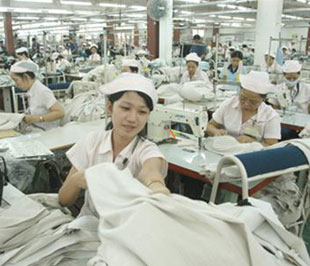
| US, EU garment markets narrowed, Vietnamese companies focus on Japan | |
While garments exported to the US and EU have been decreasing, exports going to Japan are still going well with a 20 percent growth rate in the first six months of the year. Statistics from the General Department of Customs showed that in the first six months of the year, export turnover of garments sent to Japan was USD 440 million, an increase of 22 percent over the same period of 2009.
Horikoshi, a Japanese fashion designer, said that
Under the agreement, those Vietnamese enterprises which use fabric sourced from
Currently,
In fact,
Horikoshi has advised Vietnamese enterprises to carefully study the demands and tastes of Japanese to provide Vietnam-made products with suitable designs. The consumption demand of Japanese consumers has seen some changes: the country tends to import many products and in smaller quantities rather than few products and in big quantities.
He has given some advice on the fashion trend in the coming years, saying that the designs should come from feelings from nature and traditional costumes, or from economic or political events. For example, the fact that the
According to Vu Van Trung, Trade Cousellor to
Trung said that trade counsellors and Horikoshi will visit some workshops specialising in exporting garments to
In an effort to boost exports to
Deputy Chairman of the Vietnam Textile and Garment Association Le Van Dao said that if the current export growth rate continues, garment exports to | |
| VietNamNet/TBKTVN |
